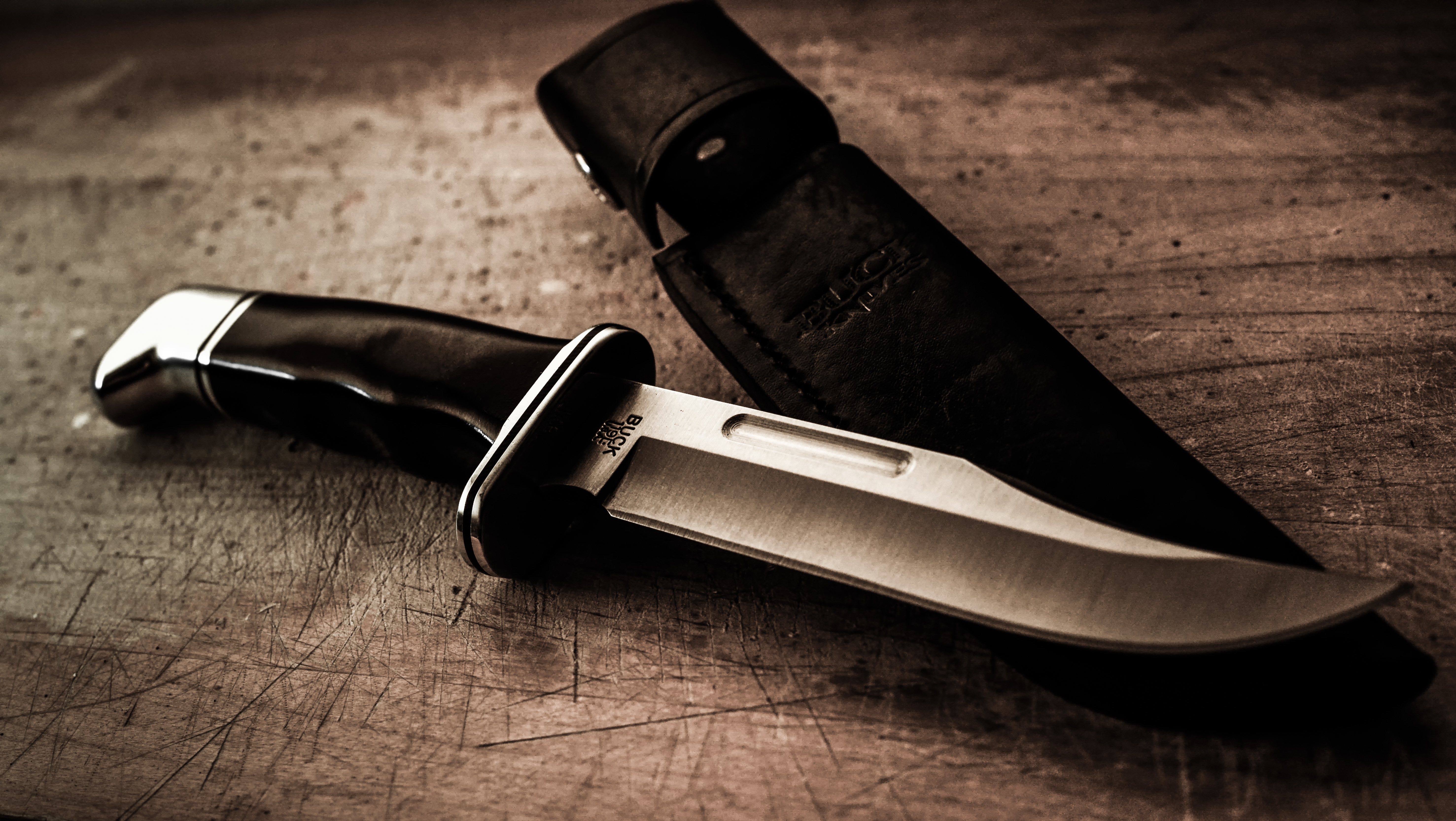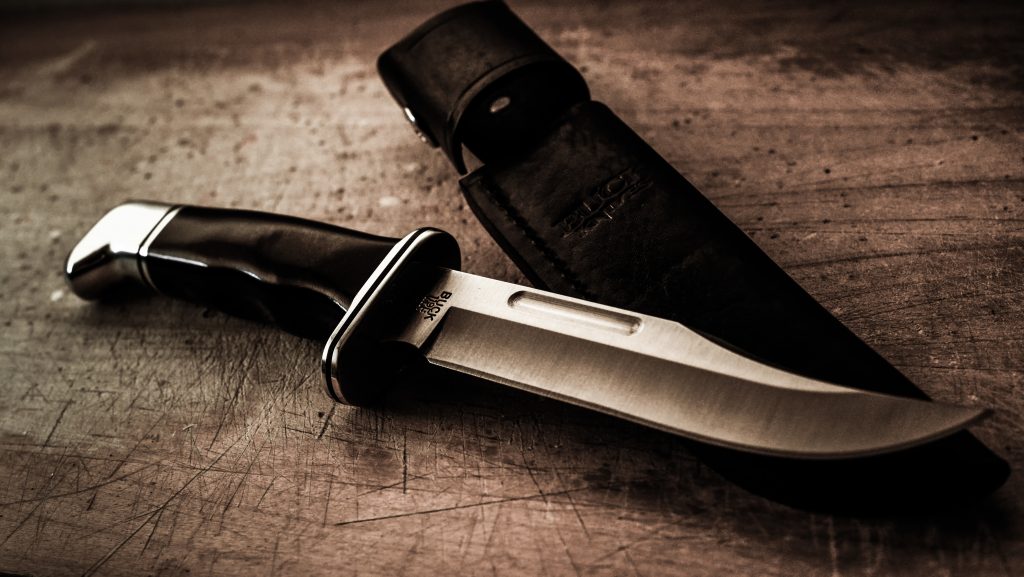Picking up the right survival knife would be a tough process if you know nothing about knives. To an average person, a knife only consists of a blade and a handle. Whereas, to a survival expert, a good knife will possess as much as 8 noticeable features.
These features determine the knife’s role in the wilderness. Therefore, planning for an outdoor scout trip demands many careful considerations to choose a knife.
Note
In a trip to the wild, there’s not a single knife that is able to do EVERYTHING for you! Every specific role would demand a specific type of knife.
So, jumping to our main point, there is a list of 8 things that you must keep a watch for! Be very careful of your consideration if you want to make a good wilderness experience. Otherwise, a wrong choice will leave your trip tasteless and unfulfilling.
So, here are the 8 necessary components that you must check before you can choose the best survival knife. These components and their details are as follows:
Blade Design: When Style Suits the Adventure!
Several types of blade designs can help a user in the wilderness. Out of all those styles, some recommended styles are the spear point, clip point and the drop point.
The spear point has the shape of the spear! It provides the maximum piercing and penetration power and is most suitable for the hunting tasks.
The Clip point has a clipped-off spine and therefore is suitable for the use of a utility knife. It also has a narrow point like a spear blade. Hence, it finds a use in hunting as well as utility tasks.
The third and the most important, the drop point has a full spine. It is not a good hunting knife, but there is a beneficial use of it as a utility knife.
Our Recommendation
We would recommend for you to use the drop point knife for the utility knife purposes and the spear knife for the hunting purposes. Clip point provides a mediocre use due to its mixed-up nature.
Fixed Blade or Folding: What Would Save You Better?
This is another important part. Here, two things come into play. The management and the durability. Of course! The management is important when you are going on a long journey. On the other hand, the fixed blade knife is significant to be more durable.
Our Recommendation
We would recommend you use a fixed-blade knife as it is more important. Having the upper edge in survival with durability is more crucial than luxury and management.
Blade’s Edge: To Give You that Cutting-Edge!
The edge of the blade is another crucial factor of the knife. A high in quality edge always gives the best game experience. Hence, there are three types of edges in this criterion.
Neutral rake angle corresponds to the ordinary rake angle that has no capabilities at all! Moreover, there is a negative rake angle which extends at an upward angle from the bolster. This angle enhances the cutting abilities of the knife while reducing the pressure.
The positive rake angle is extending at an upwards direction from the bolster. It improves the slice-n-dice capabilities of the knife. Additionally, there is a re-curved angle, which is an “s” like shape on edge. That is a definite angle as well as a negative angle.
Our Recommendation
We recommend you use the re-curved angle and the positive angle as they are the best for the wilderness.
Blade Length: When the Size Actually Matters!
There are knives of every size in the market nowadays. Make a right-hand rule, the smaller the knife, the more delicate the use.
Our Recommendation
Hence, consider using the longer blades (~10”) for the chopping and slicing tasks. Whereas a shorter blade (~5”) will be best suited to gut fish and build traps etc.
Blade Steel: Choosing Best Materials for the Best Survival Chances
There are two things at this point that primarily come into play. Firstly, let’s consider the type of steel.
To consider an excellent quality blade, we will see that it comes with two types of steels. One is the stainless type of steel, which is corrosion resistant and which holds up its edge pretty good. On the other hand, it is harder to sharpen and is not as durable as the high carbon blades.
The other type of the blade steel is the high carbon steel. This type of knife material is strong and durable, but it is not corrosion resistant nor does it hold its edge as good as a stainless blade. This blade, however, is easier to sharpen.
The other factor is the toughness of the blades. In this case 50-54 HRC (Toughness Unit) is tough whereas 58-62 holds an edge well.
Our Recommendation
We will recommend you use a blade of HRCs 54-58 as they are balanced at toughness and edges. Talking about the sharpening of the blades, have a look at our review and a guide article about the best knife sharpeners in the market over here.
Blade Grind: The Cross-Sectional Area of the Blade
There are three grinds in this context. The saber grind, the flat grind and the hollow grind.
The saber grind begins tapering closer to the edges. This means there is a thick spine at the back of the blade. This grind is suitable for the hard tasks of chopping and slicing.
The Flat grind has a tapering going from the edge to the spine. This yields a blade that is not thick enough but a high-class piercing tool.
The Hollow Grind is the combination of both the saber and the flat grind.
Our Recommendation
We would recommend you use the hollow grind as it is the best in terms of a more balanced knife.
Tang Construction: The Knife-Skeleton
There are three tangs, the full tang, hidden tang and the extended tang.
The full tang is a complete skeleton of the blade with the handle fitted on top of it. While the hidden tang is the skeleton which extends nearly to the full width and length. It is mediocre in terms of weight and durability as compared to the higher durability of the full tangs.
The third is the extended tang in which the tang extends underneath the handle as well. This tang handles the punishment well and provides enough weight for the hammering tasks.
Our Recommendation
We will recommend the extended tang as it provides all the features of the full tang in addition to better nailing and hammering tasks.
Handle Material: To Grip the Survivability
A good handle must not experience cracks and handle the moisture and environment well. In this context, consider using Linen and Micarta. These are tough materials that can handle the environment well, and are nature-friendly. Hence, this is our recommendation.
Conclusion
These are the eight things that we must consider choosing the best survival blade for the next wilderness trip. We must keep the safety above all and enjoy the adventure to the fullest!
If you want to know more, head out to our review cum guide for buying the best survival knives.






